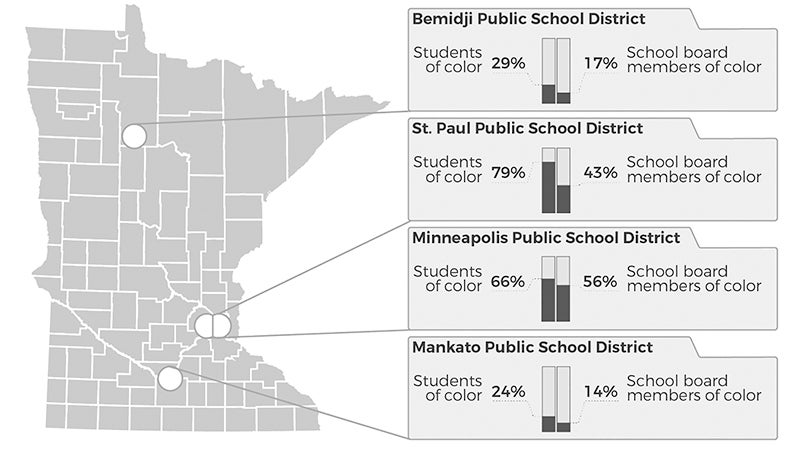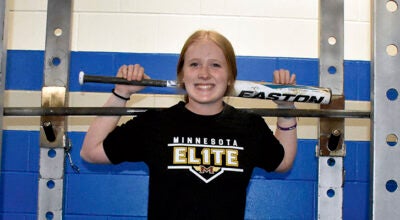State’s school boards not as diverse as student populations
Published 8:16 am Wednesday, September 6, 2017
By Solvejg Wastvedt
MPR News
When Abdi Sabrie moved to Mankato, Minn., in 2009, he wasn’t impressed with the local school district’s programs for non-English-speaking students.
“It was unacceptable,” he recalled, “how this particular group of students was not being served.”
Sabrie, a Somali-American, didn’t believe the oversight was intentional but that “there was no one familiar with their needs and their background.”
So, Sabrie ran for Mankato’s school board to take on that and other issues he saw facing the district. He ran in 2011 and in 2013 … and in 2015. Sabrie said he was planning to run “forever” until he got elected.
Since his 2015 election, Sabrie said the district has made big improvements to English language learner programs and staff diversity.
Yet, there’s frequent frustration. Sabrie said that as an African immigrant, “I’m one of a kind that has never been at the table. They don’t really know how to deal with me.”
Sabrie’s situation is increasingly common and problematic. Board members of color are still not at the table in school districts throughout the state. While students of color and mixed race students make up nearly one-third of Minnesota’s public school enrollment, only 3 percent of school district board members are people of color, according to an MPR News analysis.
Boards set policy and budgets for schools, so observers say it’s crucial they reflect the racial and ethnic diversity of district kids and represent the voices of all the families who send their kids to school. But finding and recruiting those board candidates can be a problem even in the state’s most diverse school districts.
“I remember going in January 2016 and looking around the room looking for somebody that looks like me, or like, is this group this white?” St. Paul school board vice chair Zuki Ellis said, recalling her first Minnesota School Boards Association conference.
Unlike Minnesota teachers and students, the demographics of board members are not officially tracked.
To make its estimate, MPR News contacted every Minnesota superintendent and combined their information with contacts with individual board members. The analysis identified 71 school district board members who are people of color, out of 2,148 total members.
Minnesota’s districts with the highest percentages of students of color do typically have at least some racial diversity on the board. Of the top 10, there was only one where MPR News found no board members of color.
But these boards also account for much of the state’s overall diversity. Five districts on or near American Indian reservations have 27 of the 71 board members of color MPR News identified. Minneapolis and St. Paul have another eight.
That leaves the remaining racial diversity spread thin. Most of the 39 boards where MPR News found racial diversity have only one member of color.
The Minnesota School Boards Association started gathering self-reported data on board members’ race last year. Director Kirk Schneidawind said the organization also offers equity training for board members and is looking for ways to encourage more people of color to run.
Asked if there should be more diversity, Schneidawind said, “I don’t know if that’s a question I can answer. I think that with changing demographics, I mean I think you’re going to see more individuals of color becoming more involved in their local government.”
Some school board members responding to an MPR News query on the issue declined to discuss their board’s racial makeup, saying it was irrelevant.
“There is no litmus test for race or ethnicity when running for School Board,” Columbia Heights board chair John Larkin wrote in a letter.
Sabrie and others, though, say it’s vital that a school district’s leadership reflect its district’s diversity.
“It’s not that people are deliberately trying to not be concerned about [communities of color], but their lived experience doesn’t allow them to talk about those things in the appropriate way,” said Bemidji school board member and White Earth Ojibwe member John Gonzalez.
The experience of some Minnesota towns also suggests that diversity doesn’t happen organically.
The tiny town of Walnut Grove in southwestern Minnesota has a thriving Hmong community that makes up 35 percent of the population.
A quarter of the local school district’s students are Asian. But there are still no Hmong school board members.
“I’d love to have some young people stand up and move forward. But it’s hard to get people like that,” parent Terry Yang said. Yang’s was the second Hmong family to move to Walnut Grove and he now owns the local grocery store, Bubai Food.
Yang said young people usually leave for the city before they can run for office. The older generation “just [doesn’t] have the knowledge or the capability to get involved with something like that.”
Westbrook-Walnut Grove school Superintendent Loy Woelber said he’s tried to recruit Hmong board candidates. But so far, he’s had to connect to the community in other ways.
“Fortunately, in a small school, where I have a couple board members and myself that have a relationship with the Hmong community, and I’m not sitting in a district office and never get out — they are my board now,” Woelber said as he sat down with Yang and City Council member Xiong Yang in the town bar.
In other Minnesota small towns, an all-white board actually does reflect the community.
In the western Minnesota district of Clinton-Graceville-Beardsley, Superintendent Phil Grant said he has 96 percent white students. Grant said he thinks more about diversity of income, education level and age on his board.
Like many small districts, Grant said he
works hard just to fill board seats. “It’s like, who can we get?”






